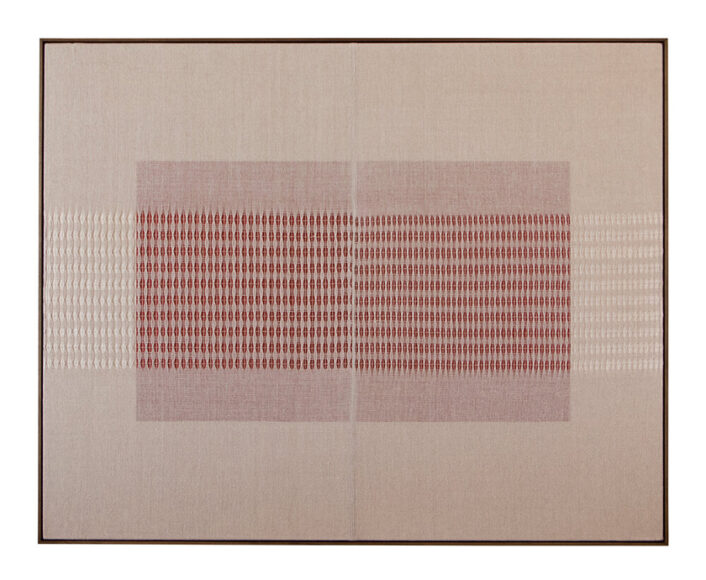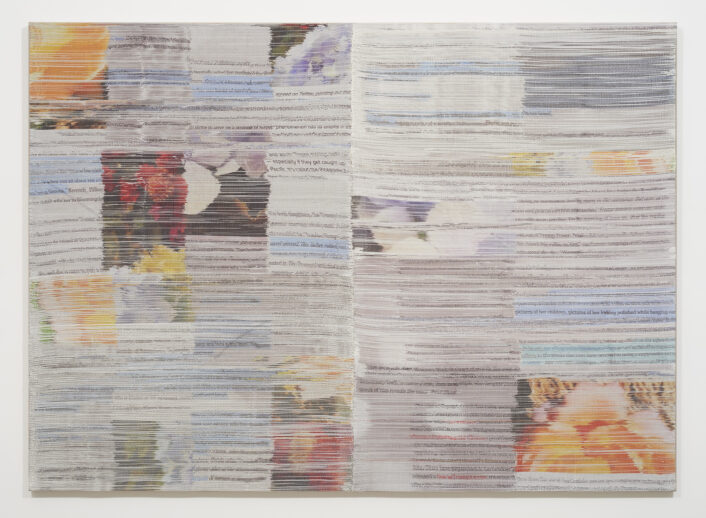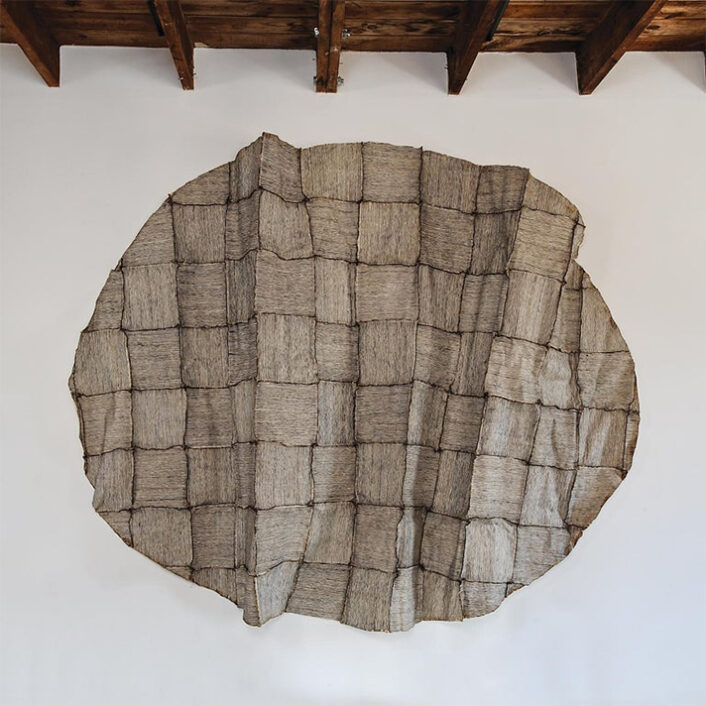Design
Morgane Baroghel-Crucq’s textiles
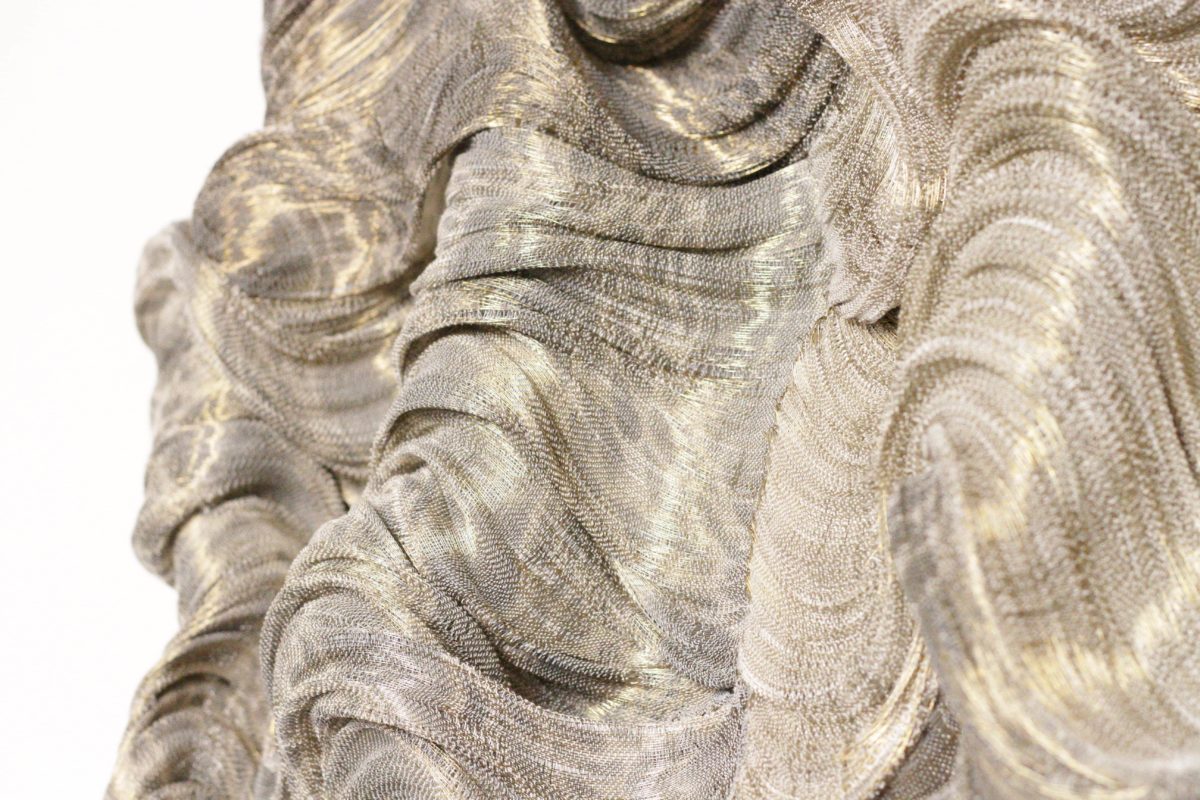
Aster Dark is made from brass and silk.
Image courtesy of: Caracters
Morgane Baroghel-Crucq is a French textile designer who currently resides in Aix-en-Provence. Baroghel-Crucq studied at the Textile Department of the ENSCI (National School of Industrial Creation) in Paris; in 2015, she was awarded the Young Creative Craftsworker Award by Atelier d’Art de France. For the past six years, the artist’s creations have been supported by the Foundation d’Enterprise Banque Popular. Joining the Académie des Savoir Faire (a Foundation d’Enterprise Hermès program) in 2019 helped position Baroghel-Crucq as a pioneer among French textile designers.
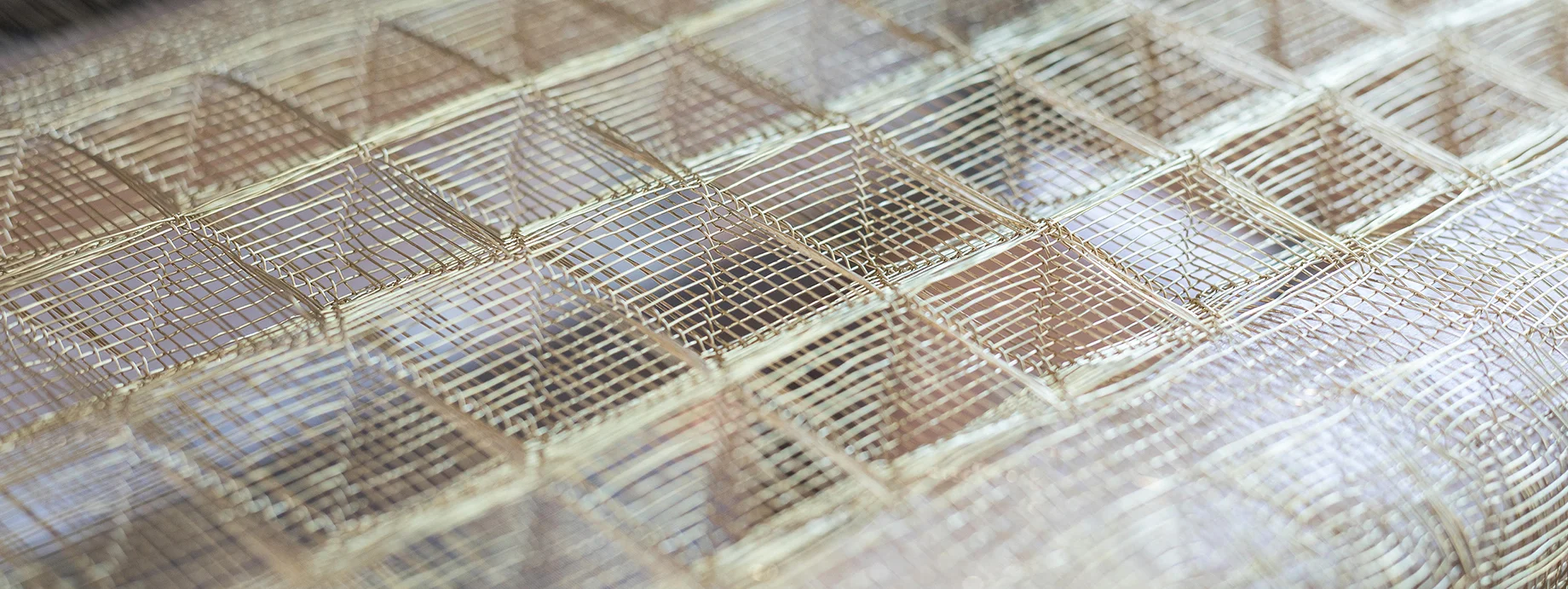
Gaufre Inflexible, gold. Made from brass.
Image courtesy of: Morgane Baroghel-Crucq
Baroghel-Crucq’s interest in textiles began early when she would watch her grandmother weave; her studies at the university further cemented her career choice. Courtesy of Galerie Magazine, “I literally learned to speak the language of weaving. When I first worked on a loom, I saw endless possibilities of construction and creation.”
Speaking of her influences, Baroghel-Crucq draws upon the works of writers including Richard Powers and Roger Callous. Specifically, Rebecca Solnit’s “A Field Guide to Getting Lost,” is her biggest inspiration. Quoting the artist herself, “The way these people describe the world influences me a lot.”

Metal on the loom… Inspiration comes from many forms; specifically, light.
Image courtesy of: Galerie Magazine
Baroghel-Crucq’s artistic process is a precise and reflective undertaking. The artist uses traditional textile weaving techniques with unanticipated materials. The result is a bespoke product that is 100% unique which is often mistaken for fine art.
It is clear that metal is her material of choice… and Baroghel-Crucq is adept at taking into account different metals’ unique properties. In particular (courtesy of the designer’s web site), “its pure and cold brightness, its aesthetics changing according to its oxidation, and the way it keeps any shape it’s given.”
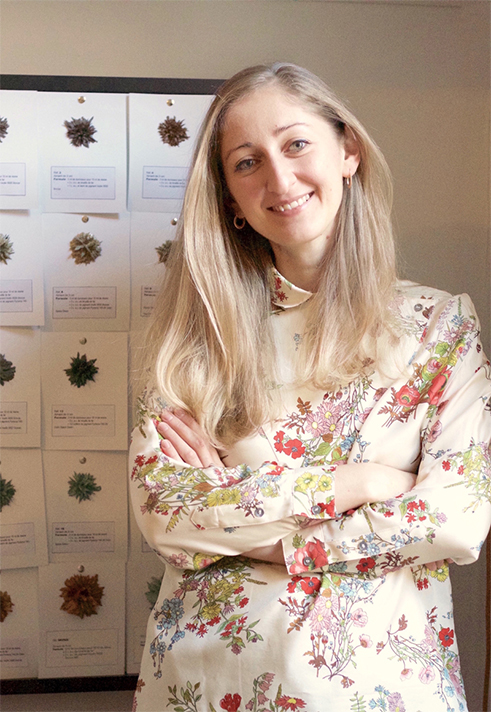
The artist! The studio is very adept at helping clients carry out their designs.
Image courtesy of: Galerie Magazine
Baroghel-Crucq’s weaving workshop is located in the south of France; this is where the studio creates hand-woven, high-end textiles. The textiles are created on looms that are 23.5″ by 39″ wide. Much of the work requested is bespoke and custom; as such, wider proposals are executed by working with some of France’s top hand-weaving ateliers. Materials are sourced almost exclusively from Europe; specifically, the fibers and filaments come from either France or Italy.
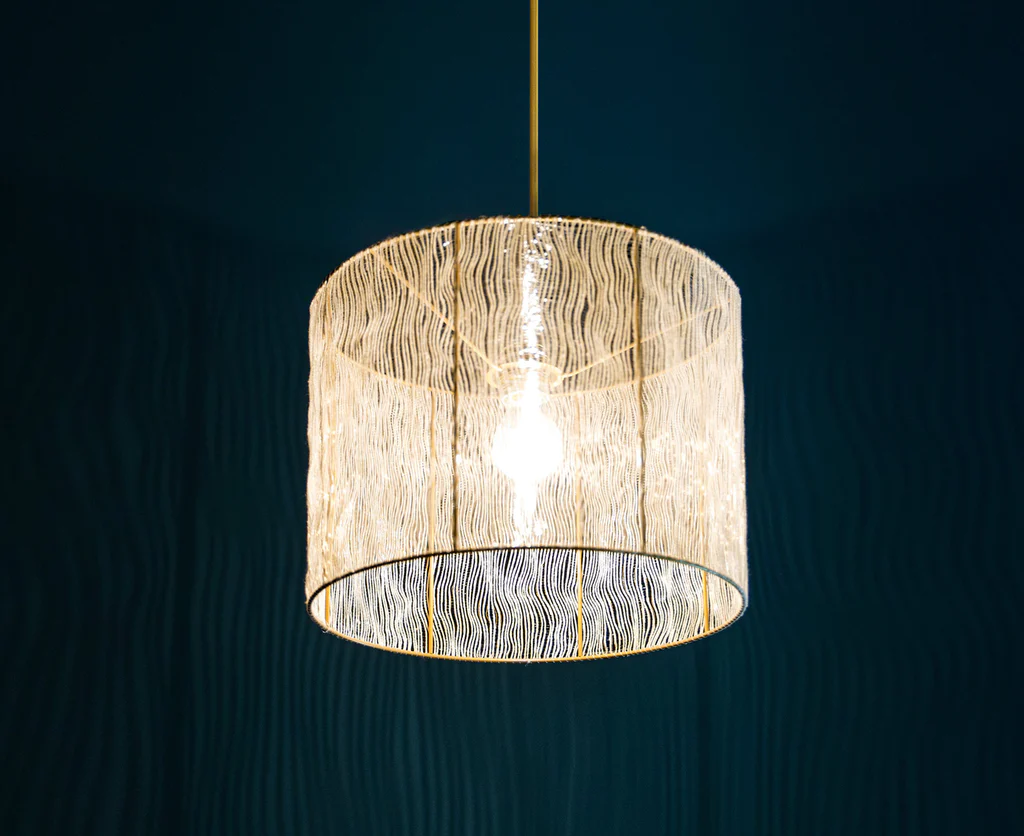
Suspension Tissue Main light fixture.
Image courtesy of: Atelier Singulier
Baroghel-Crucq is masterful at producing multi-dimensional tapestries using varying shades of metallic thread that elegantly form waves of color, sheen, and texture. In addition to being used as textiles, the artist’s pieces can also be used as wall sculptures. Taking it all one step further; recently, Baroghel-Crucq designed a stunning lighting collection
